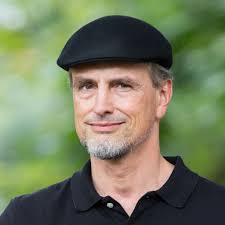Profile

The New York Times headlined: "When A.I. Matures, It May Call Jürgen Schmidhuber 'Dad'." Since age 15 or so, his main goal has been to build a self-improving Artificial Intelligence (AI) smarter than himself, then retire. His lab's Deep Learning Neural Networks (NNs) based on ideas published in the "Annus Mirabilis" 1990-1991 have revolutionised machine learning and AI. In 2009, the CTC-trained Long Short-Term Memory (LSTM) of his team was the first recurrent NN to win international pattern recognition competitions. In 2010, his lab's fast and deep feedforward NNs on GPUs greatly outperformed previous methods, without using any unsupervised pre-training, a popular deep learning strategy that he pioneered in 1991. In 2011, the DanNet of his team was the first feedforward NN to win computer vision contests, achieving superhuman performance. In 2012, they had the first deep NN to win a medical imaging contest (on cancer detection). This deep learning revolution quickly spread from Europe to North America and Asia, and attracted enormous interest from industry. By the mid 2010s, his lab's NNs were on 3 billion devices, and used billions of times per day through users of the world's most valuable public companies, e.g., for greatly improved speech recognition on all Android smartphones, greatly improved machine translation through Google Translate and Facebook (over 4 billion LSTM-based translations per day), Apple's Siri and Quicktype on all iPhones, the answers of Amazon's Alexa, and numerous other applications. In May 2015, his team published the LSTM-inspired Highway Net, the first working really deep feedforward NN with hundreds of layers—its open-gated version called ResNet (Dec 2015) has become the most cited NN of the 21st century, LSTM the most cited NN of the 20th (Bloomberg called LSTM the arguably most commercial AI achievement). His lab's NNs are now heavily used in healthcare and medicine, helping to make human lives longer and healthier. His research group also established the fields of mathematically rigorous universal AI and recursive self-improvement in metalearning machines that learn to learn (since 1987). Generative AI is also based on his work: he introduced artificial curiosity & generative adversarial networks (1990, now widely used), self-supervised pre-training for deep learning (1991, the "P" in "ChatGPT" stands for "pre-trained"), and unnormalised linear Transformers (1991, the "T" in "ChatGPT" stands for "Transformer"). His formal theory of creativity & curiosity & fun explains art, science, music, and humor. He also generalized algorithmic information theory and the many-worlds theory of physics, and introduced the concept of Low-Complexity Art, the information age's extreme form of minimal art. Elon Musk tweeted: "Schmidhuber invented everything." He is recipient of numerous awards, author of over 400 peer-reviewed papers, and co-founder of the company NNAISENSE. He is a frequent keynote speaker, and advising various governments on AI strategies.